Africa is home to some of the world’s most remarkable wildlife. There are hundreds of protected areas across the continent and countless more private game reserves.
They all serve the same purpose: to safeguard our biodiversity and to create safe spaces for people to witness nature in its most raw form. After all, that’s what a safari is about, isn’t it?
As nature lovers, we have an appreciation for wildlife that can only be satisfied with up-close encounters. For many people, this is what dreams are made of.
However, there are tens of thousands of species spread across the continent. Which of them can you expect to see when you embark on a bespoke safari with Discover Africa?
We’ve put together this useful guide to some renowned safari destinations and what you can expect to see in each country. Read on to discover where you should explore next.
Africa’s Big Five
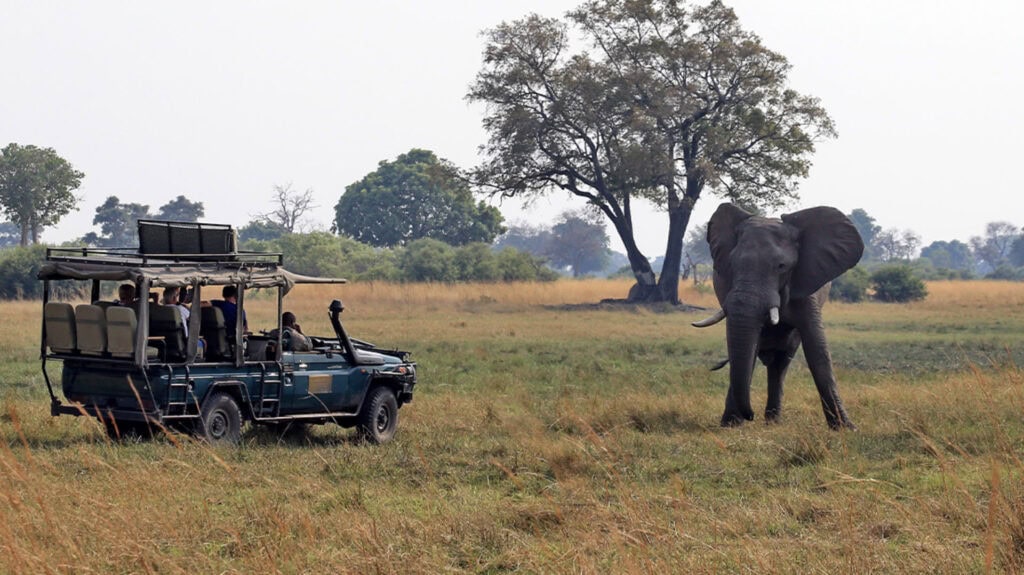
Before we get into the nitty gritty of wildlife in each destination, let’s take a moment to celebrate Africa’s most iconic animals: the Big Five.
- African lion (Panthera leo melanochaita)
- African bush elephant (Loxodonta africana) and African forest elephant (Loxodonta cyclotis)
- Black rhinoceros (Diceros bicornis) and white rhinoceros (Ceratotherium simum)
- African buffalo (Syncerus caffer)
- African leopard (Panthera pardus pardus)
The name “Big Five” was initially coined by hunters who considered these the five most dangerous animals to hunt on foot in Africa, but today, we use it to celebrate our most charismatic species. Here are some of the countries where you can find the Big Five:
- Botswana
- Kenya
- Mozambique
- Namibia
- Rwanda
- South Africa
- Tanzania
- Uganda
- Zambia
- Zimbabwe
Other parts of Africa might only have three or four of the Big Five species – that’s why Big Five destinations are so popular with safari enthusiasts.
Tanzania
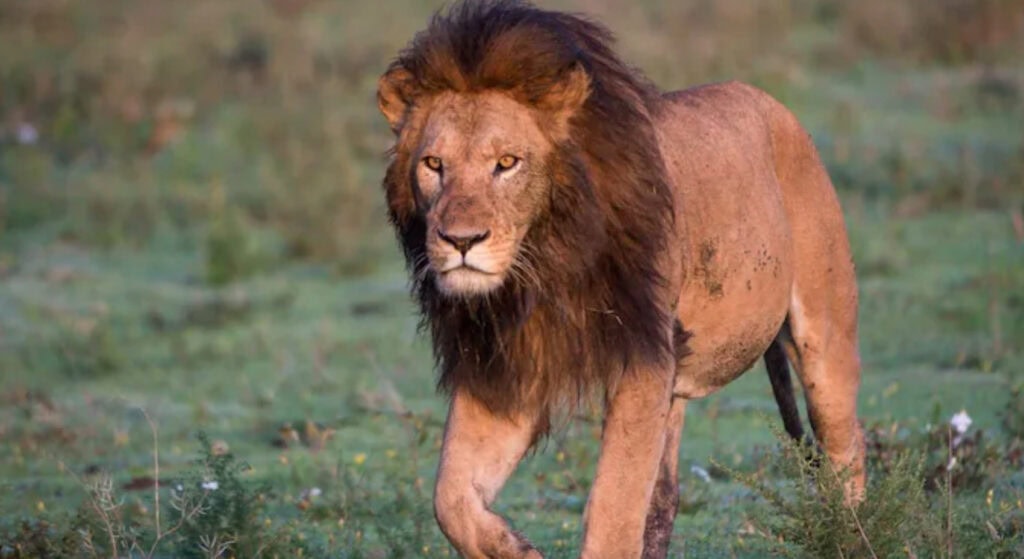
When you think of a safari in Africa, you’ll likely conjure up images of East Africa, more specifically, the vast Serengeti in Tanzania. In fact, for many travellers, this is the region that sparks the dream of going on a safari.
“I’m not over-fond of animals,” said Sir David Attenborough when he visited the Serengeti. “I am merely astounded by them.” It’s this sense of awe that defines Tanzania as a whole.
It’s an incredibly diverse country, spanning the grassy pastures of the Serengeti and Ngorongoro Crater, the wetlands of Ruaha National Park, the climatic extremes of Kilimanjaro, and the primaeval forests of Gombe National Park, where Jane Goodall pioneered chimpanzee research.
Tanzania hosts around 20% of Africa’s large mammal population, including the Big Five and immense herds of wildebeest, gazelles, and zebras. Each year, these herds take part in the Great Migration, one of the most spectacular natural phenomena on the planet.
Iconic Wildlife of Tanzania
- The Big Five
- Eastern chimpanzee (Pan troglodytes schweinfurthii)
- Southeast African cheetah (Acinonyx jubatus jubatus)
- Giraffe (Giraffa cameleopardus)
- Grey crowned crane (Balearica regulorum)
- Blue wildebeest (Connochaetes taurinus)
- East African wild dog (Lycaon pictus lupinus)
- Nile crocodile (Crocodylus niloticus)
- Spotted hyena (Crocuta crocuta)
- African wolf (Canis lupaster)
Where to See Wildlife in Tanzania
Tanzania has 17 national parks and 23 game reserves. Here are the best destinations for a Tanzanian safari:
- Serengeti National Park
- Ruaha National Park
- Selous Game Reserve
- Ngorongoro Conservation Area
- Tarangire National Park
- Lake Manyara National Park
- Mahale Mountains National Park
Kenya
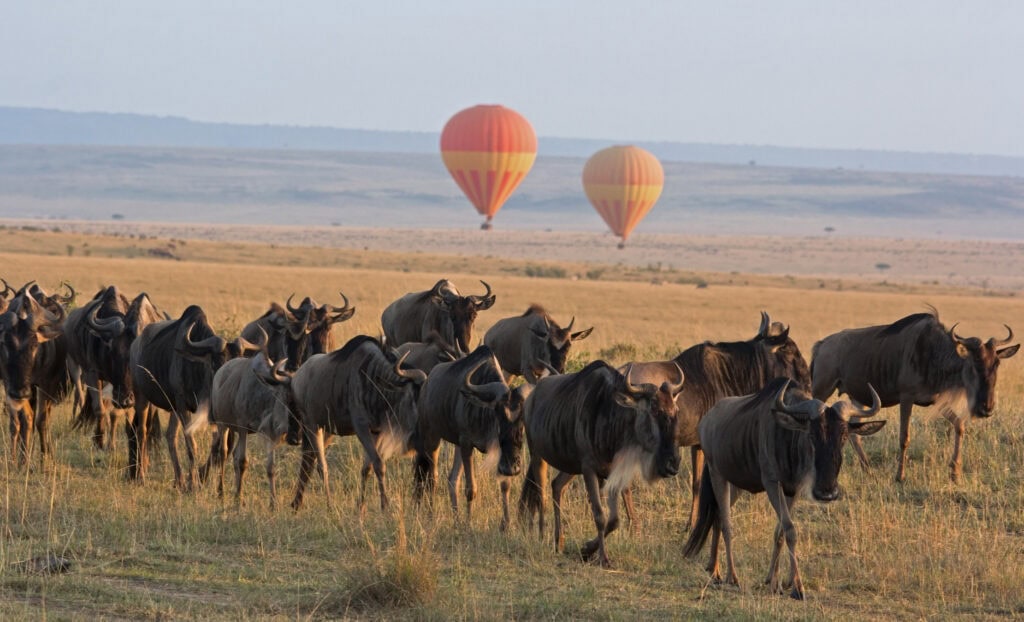
Like Tanzania, Kenya is one of the world’s most famous safari destinations. It shares the honour of hosting the annual Great Migration, with its Masai Mara forming an immense contiguous conservation area with the Serengeti.
It’s also notable for its relatively large population of black rhinos, while its grassy plains support a healthy population of cheetahs, too.
While the Mara might be Kenya’s most famous wilderness area, it’s just the tip of the iceberg. This vast country is dotted with 29 national parks and 20 national reserves, including six marine protected areas. That means a safari in Kenya could include both the Big Five and marine species like whale sharks, sea turtles, and dolphins.
Hungry Nile crocodiles lie in wait along the Mara River and other waterways, while Amboseli National Park offers possibly some of the most scenic game drives in Africa, thanks to a backdrop that includes Mount Kilimanjaro.
Iconic Wildlife of Kenya
- The Big Five
- Southeast African cheetah (Acinonyx jubatus jubatus)
- Blue wildebeest (Connochaetes taurinus)
- Giraffe (Giraffa cameleopardus)
- Hippopotamus (Hippopotamus amphibious)
- Thomson’s gazelle (Eudorcas thomsonii)
- East African wild dog (Lycaon pictus lupinus)
- Grévy’s zebra (Equus grevyi)
- Nile crocodile (Crocodylus niloticus)
- Spotted hyena (Crocuta crocuta)
Where to See Wildlife in Kenya
- Masai Mara
- Amboseli National Park
- Tsavo National Park (East and West)
- Samburu National Reserve
- Lake Nakuru National Park
- Laikipia Plateau
- Mount Kenya and Aberdares
Uganda
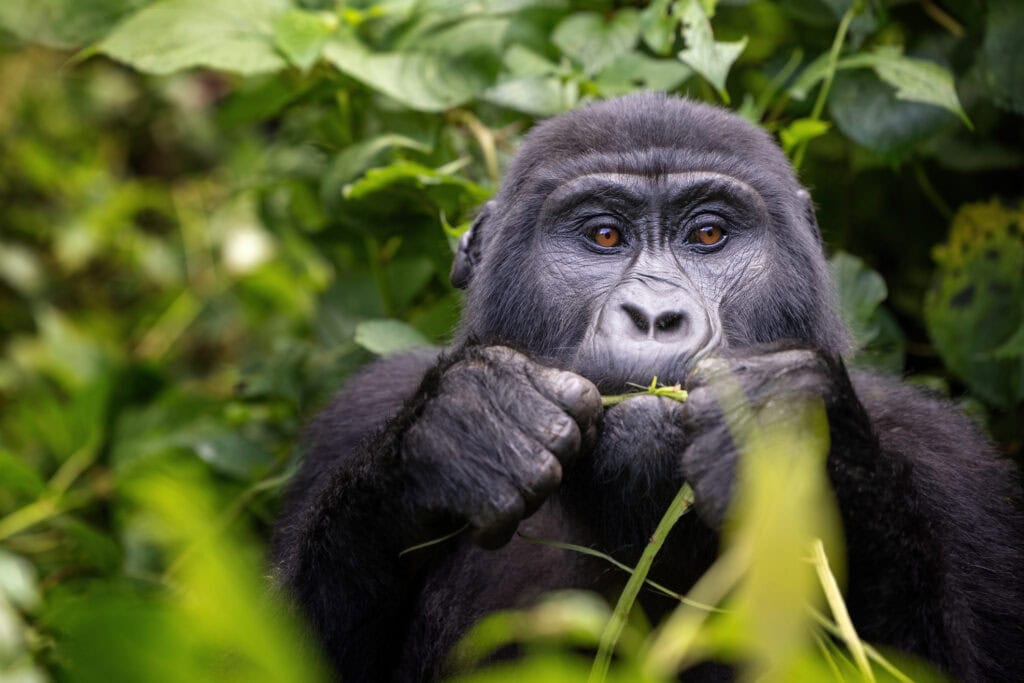
Uganda might be one of Africa’s lesser-known safari destinations, but it’s certainly world-famous for one species in particular: the mountain gorilla.
In fact, nearly half of all the world’s mountain gorillas live in Bwindi Impenetrable National Park, an untouched jungle where you can also find chimpanzees and other rare primates.
Like other countries along East Africa’s Albertine Rift, Uganda boasts remarkable endemism, which means many of the species found here aren’t found anywhere else. For example, L’Hoest’s monkey and the Rwenzori turaco are endemic to the Rwenzori Mountains between Uganda and the Democratic Republic of the Congo.
However, there’s even more to Uganda. With over 60 protected areas – including 10 national parks – it’s also a Big Five safari destination. Birders travelling to Uganda can also look forward to spotting enigmatic species like the shoebill and the grey crowned crane, Uganda’s national bird.
Iconic Wildlife of Uganda
- The Big Five (including the African forest elephant)
- Mountain gorilla (Gorilla beringei beringei)
- Eastern chimpanzee (Pan troglodytes schweinfurthii)
- Ugandan kob (Kobus kob thomasi)
- African grey parrot (Psittacus erithacus)
- Great blue turaco (Corythaeola cristata)
- Grey crowned crane (Balearica regulorum)
- Shoebill (Balaeniceps rex)
Where to See Wildlife in Uganda
- Bwindi Impenetrable National Park
- Murchison Falls National Park
- Queen Elizabeth National Park
- Rwenzori Mountains National Park
Rwanda

Rwanda is a haven for some of Africa’s most notable animal species. Like Uganda, it lies along the Albertine Rift, meaning it has incredible species endemicity and also shares many species with its neighbours, including mountain gorillas and chimpanzees.
The late primatologist, Dian Fossey, spent nearly 20 years studying mountain gorillas in Volcanoes National Park. Today, the park has survived wars to become one of the last strongholds for this rare ape, and visitors can venture on walking safaris into the forests to witness them up close.
Akagera National Park, on the other hand, is a savanna ecosystem with species that include the Big Five – including the critically endangered eastern black rhinoceros.
The local mammal population has more than tripled since 2010, largely thanks to joint efforts between African Parks and the Rwanda Development Board.
Iconic Wildlife of Rwanda
- The Big Five
- Eastern gorilla (Gorilla beringei)
- Eastern chimpanzee (Pan troglodytes schweinfurthii)
- Owl-faced monkey (Cercopithecus hamlyni)
- Shoebill (Balaeniceps rex)
Where to See Wildlife in Rwanda
Botswana

There’s a reason the BBC keeps coming back to Botswana. As the home of the Okavango Delta, Botswana is one of Africa’s premier safari destinations, hosting healthy populations of the Big Five and countless other species.
Each year, when the delta floods, it attracts one of the continent’s highest concentrations of wildlife. To the east of the delta, safari-goers can experience Chobe National Park, just a short distance from Victoria Falls.
Huge herds of elephants pass through the park during the dry season, attracted to the perennial waterways. Interestingly, this is one of the only places in Africa where lions hunt fully-grown elephants.
However, Botswana isn’t one massive wetland. In fact, most of the country is covered by the Kalahari Desert, creating a striking contrast with the lush delta.
Here, in the Central Kalahari Game Reserve, black-maned lions rule the landscape, fighting for resources with other African icons like African wild dogs, spotted hyenas, and leopards.
As you travel northward, you can explore the Makgadikgadi Pans and their spectacular birdlife.
Iconic Wildlife of Botswana
- The Big Five
- Southeast African cheetah (Acinonyx jubatus jubatus)
- Blue duiker (Philantomba monticola)
- Cape wild dog (Lycaon pictus pictus)
- Lechwe (Kobus leche)
- Angolan giraffe (Giraffa cameleopardus angolensis)
- Hippopotamus (Hippopotamus amphibious)
- Topi (Damaliscus lunatus jimela)
- Sitatunga (Tragelaphus spekii)
- Wattled crane (Grus carunculata)
- Lilac-breasted roller (Coracias caudatus)
- Spotted hyena (Crocuta crocuta)
Where to See Wildlife in Botswana
- Chobe National Park
- Moremi Game Reserve
- Central Kalahari Game Reserve
- Kgalagadi Transfrontier Park
- Makgadikgadi Pans National Park
- Nxai Pans National Park
- Northern Tuli Game Reserve
Zambia
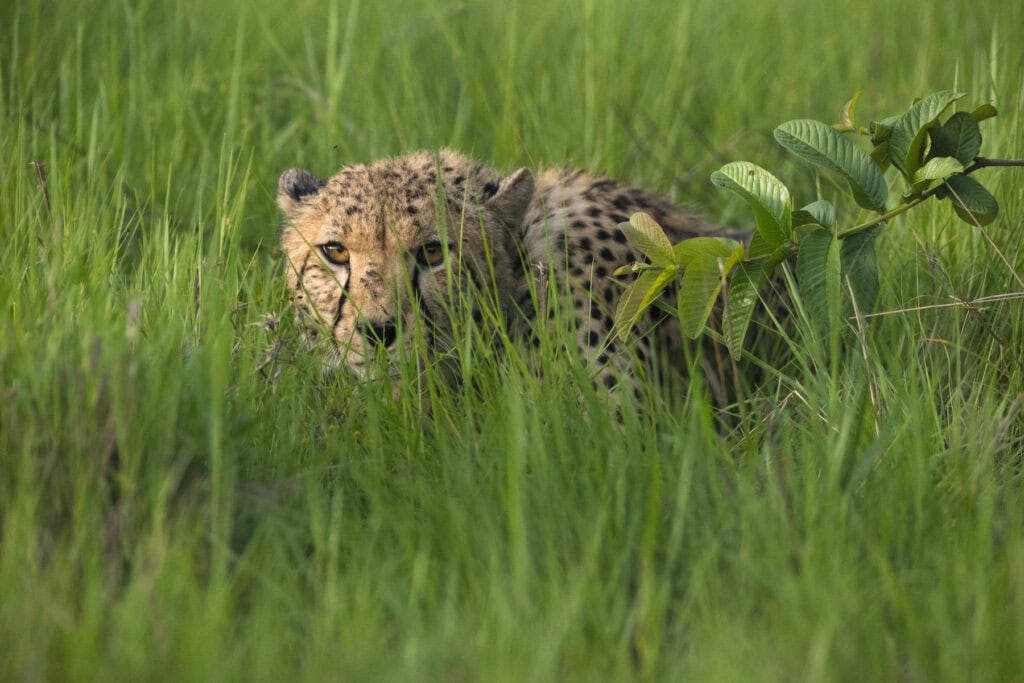
Most travellers visit Zambia for one thing: Victoria Falls. It’s easy to understand why – the waterfall is one of the world’s largest and is surrounded by spectacular natural scenery.
However, hidden in this scenery you’ll discover incredible biodiversity. In fact, Zambia has 20 national parks, each with its own appeal.
In the north, the Bangweulu Wetlands support thriving bird populations, as well as large herds of semi-aquatic antelope like reedbuck and sitatunga. One of its protected areas, Kasanka National Park, hosts the world’s largest mammal migration: between October and January each year, millions of straw-coloured fruit bats migrate to the park’s Mushitu forest, moving to and from a small patch of forest in a truly remarkable natural phenomenon.
Meanwhile, in the Luangwa Valley, safari-goers can encounter mind-blowing biodiversity in various types of habitats, ranging from vast grasslands to woodland savannahs. South Luangwa National Park is one of the best places in Africa to experience a walking safari.
Iconic Wildlife of Zambia
- The Big Five
- Southeast African cheetah (Acinonyx jubatus jubatus)
- Kinda baboon (Papio kindae)
- Hippopotamus (Hippopotamus amphibious)
- Spotted hyena (Crocuta crocuta)
- Thornicroft’s giraffe (Giraffa camelopardalis thornicrofti)
- Side-striped jackal (Lupulella adusta)
- Lechwe (Kobus leche)
- Puku (Kobus vardonii)
- African fish eagle (Icthyophaga vocifer)
- Shoebill (Balaeniceps rex)
- Spotted-necked otter (Hydrictis maculicollis)
- Straw-coloured fruit bat (Eidolon helvum)
Where to See Wildlife in Zambia
- Kafue National Park
- Kasanka National Park
- Liuwa Plain National Park
- Lower Zambezi National Park
- North Luangwa National Park
- South Luangwa National Park
- Sioma Ngwezi National Park
Mozambique
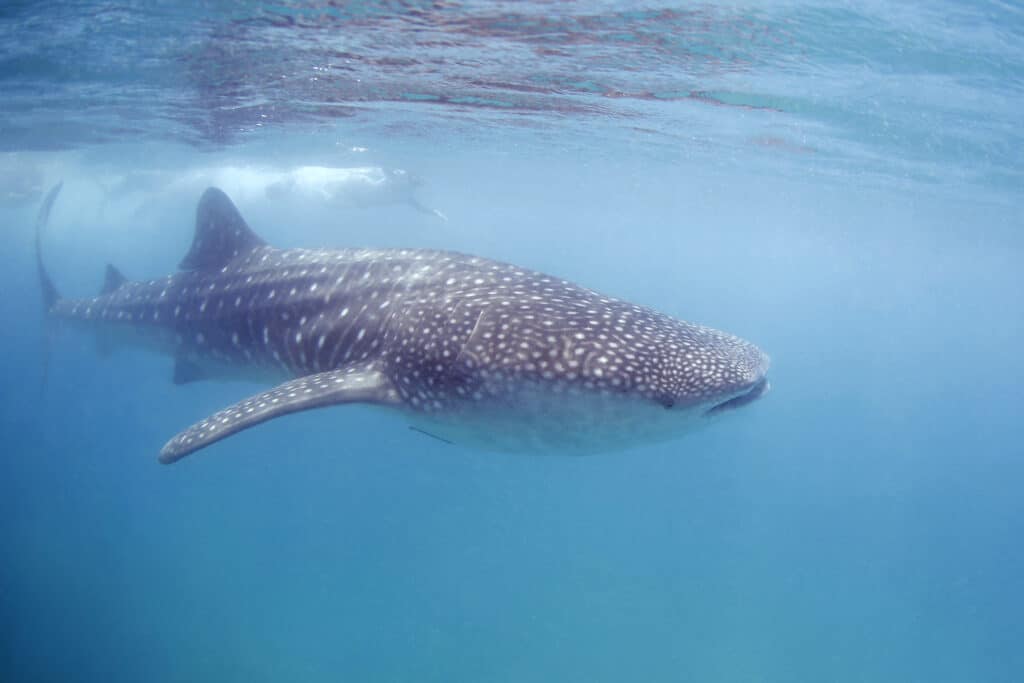
Mozambique is another African safari destination that has both terrestrial and marine biodiversity.
Inland, in places like Limpopo National Park and Zinave National Park, visitors can see the Big Five up close. In fact, Zinave is a wonderful success story – once ravaged by civil war, the park is experiencing a successful period of species reintroductions.
However, many people visit Mozambique for its coastal destinations. Places like the Bazaruto Archipelago offer more than beach holidays – they’re also places where you can snorkel and scuba dive with incredible marine species like sea turtles, dolphins, and the world’s largest fish, the whale shark.
Bazaruto, in particular, is home to the last remaining viable population of dugongs in Africa. Birdlife is also prolific in Mozambique, featuring exciting species like the mangrove kingfisher, racket-tailed roller, and the vividly-coloured African pitta.
Iconic Wildlife of Mozambique
- The Big Five
- South African giraffe (Giraffa camelopardalis giraffe)
- Hippopotamus (Hippopotamus amphibious)
- Spotted hyena (Crocuta crocuta)
- Nyala (Tragelaphus angasii)
- Dugong (Dugong dugon)
- Whale shark (Rhincodon typus)
- Leatherback sea turtle (Dermochelys coriacea)
- Mangrove kingfisher (Halcyon senegaloides)
- Mozambique spitting cobra (Naja mossambica)
Where to See Wildlife in Mozambique
- Bazaruto National Park
- Maputo Special Reserve
- Gorongosa National Park
- Niassa Reserve
South Africa
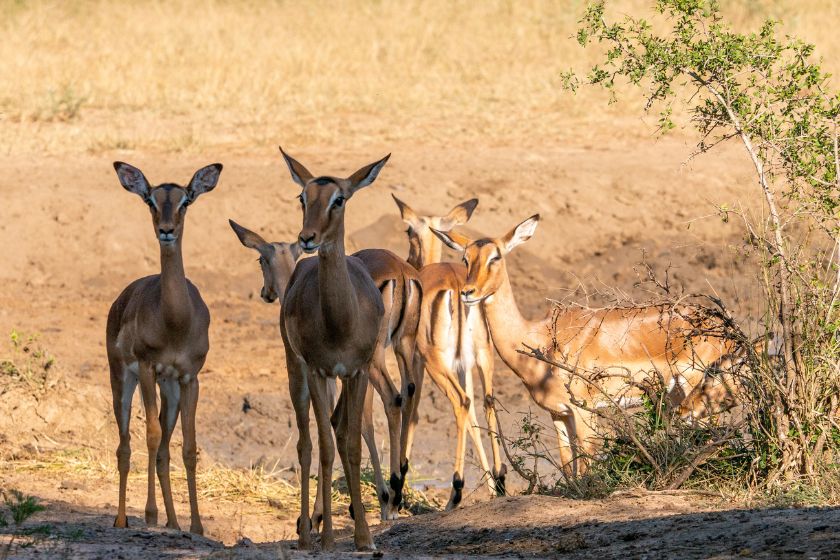
South Africa’s most famous safari destination is Kruger National Park. Many consider it one of Africa’s best national parks thanks to its excellent facilities, extensive network of tarred roads, and thriving populations of Big Five species.
Like many African safari destinations, South Africa is a land of extremes. On the east coast, the Garden Route is a lush, forested stretch of coastline that shelters less-commonly sought after animals like the Knysna turaco and blue duiker. There’s even a sole African elephant living in the dense forests around Knysna.
The Western Cape is a world-class marine safari destination. Migrating whales pass along the coast each year, while apex predators like great white sharks and killer whales live here year-round.
As you head north, South Africa becomes arid and sandy, but there’s still remarkable biodiversity. The Kgalagadi Transfrontier Park stretches into Botswana and is home to desert-adapted lions, cheetahs, and leopards.
Also in the north, Mapungubwe National Park protects thousands of massive baobab trees, which provide food for large herds of elephants.
Iconic Wildlife of South Africa
- The Big Five
- Southeast African cheetah (Acinonyx jubatus jubatus)
- Cape wild dog (Lycaon pictus pictus)
- South African giraffe (Giraffa camelopardalis giraffe)
- Hippopotamus (Hippopotamus amphibious)
- Spotted hyena (Crocuta crocuta)
- Cape mountain zebra (Equus zebra zebra)
- Springbok (Antidorcas marsupials)
- Greater kudu (Tragelaphus strepsiceros)
- Chacma baboon (Papio ursinus)
- Cape fox (Vulpes chama)
- African penguin (Spheniscus demersus)
- Southern right whale (Eubalaena australis)
- Great white shark (Carcharodon carcharias)
- Bearded vulture (Gypaetus barbatus)
- Knysna turaco (Tauraco corythaix)
- Common ostrich (Struthio camelus)
- Kori bustard (Ardeotis kori)
Where to See Wildlife in South Africa
- Kruger National Park
- Mapungubwe National Park
- Addo Elephant National Park
- Kgalagadi Transfrontier National Park
- iSimangaliso Wetland Park
- Pilanesberg National Park
- Table Mountain National Park
- Hluhluwe-Imfolozi Park
- Tswalu Desert Reserve
- Madikwe Game Reserve
Zimbabwe
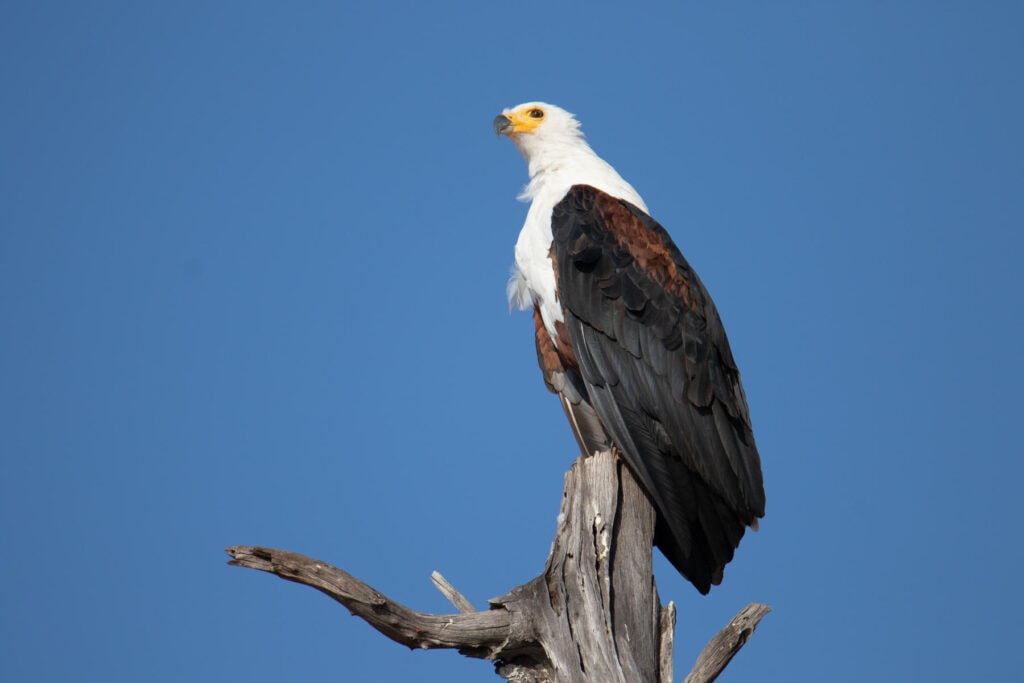
Zimbabwe’s most famous safari areas are Gonarezhou National Park and Hwange National Park. Both feature the Big Five, with Gonarezhou sharing a border with South Africa’s Kruger National Park and Mozambique’s Limpopo National Park.
In Hwange, visitors can spot over 100 mammal species and over 400 bird species, including Zimbabwe’s national bird, the African fish eagle.
Further north, the Zambezi River forms Zimbabwe’s border with Zambia. Here, Mana Pools National Park serves as the country’s most unique safari destination, with elephants that stand on their hind legs to reach tender leaves and wild dogs that battle hyenas and lions for survival.
You can also watch elephants cross the Zambezi, often using their trunks as makeshift snorkels.
Matsudona National Park is another Big Five reserve and also boasts rare species like the serval and the ground pangolin.
Meanwhile, Lake Kariba is famous for its resident tiger fish population. These toothy predators have been known to leap out of the water and catch swallows in mid-air.
Iconic Wildlife of Zimbabwe
- The Big Five
- Southeast African cheetah (Acinonyx jubatus jubatus)
- South African giraffe (Giraffa camelopardalis giraffe)
- Hippopotamus (Hippopotamus amphibious)
- Spotted hyena (Crocuta crocuta)
- Cape wild dog (Lycaon pictus pictus)
- Roan antelope (Hippotragus equinus)
- Southern sable antelope (Hippotragus niger niger)
- African fish eagle (Icthyophaga vocifer)
- Zambezi (bull) shark (Carcharhinus leucas)
Where to See Wildlife in Zimbabwe
Namibia

Namibia is Africa’s desert wonderland. Its red dunes tower above the landscape in the Namib Desert, forming part of one of the world’s strangest wildlife habitats.
Where else could you see elephants and seals in the same national park? The Namib evokes images of regal gemsbok against desert backdrops, and this national icon can be found across much of the country.
In the north of the country, Etosha National Park is home to the Big Five and resident species like Hartmann’s mountain zebra and the elusive brown hyena.
Some of Namibia’s most interesting animals are rather tiny and can only be observed on foot. These include the Cape fox, bat-eared fox, and jackals, but some are even tinier. There’s the Namib desert beetle, for example, which uses its knobby back to collect water from the morning fog, as well as the Namaqua chameleon, which has traded bright colours for drab desert camouflage.
Iconic Wildlife of Namibia
- The Big Five
- Southeast African cheetah (Acinonyx jubatus jubatus)
- Brown hyena (Parahyaena brunnea)
- Angolan giraffe (Giraffa cameleopardus angolensis)
- Spotted hyena (Crocuta crocuta)
- Cape wild dog (Lycaon pictus pictus)
- Gemsbok/South African oryx (Oryx gazella)
- Hartmann’s mountain zebra (Equus zebra hartmannae)
- Kirk’s dik-dik (Madoqua kirkii)
- Bat-eared fox (Otocyon megalotis)
- Cape fur seal (Arctocephalus pusillus)
- Orca/killer whale (Orcinus orca)
- Meerkat (Suricata suricatta)
- Damaraland mole-rat (Fukomys damarensis)
- Desert sidewinding adder (Bitis peringueyi)
- Namaqua dwarf chameleon (Bradypodion occidentale)
- Lesser flamingo (Phoeniconaias minor)
- Rüppell’s parrot (Poicephalus rueppellii)
Where to See Wildlife in Namibia
- Etosha National Park
- Namib-Naukluft National Park
- Erindi Private Game Reserve
- Skeleton Coast National Park
- Damaraland
- Caprivi Strip (Zambezi Region)











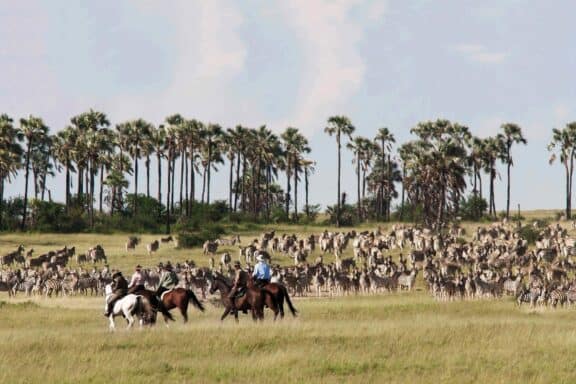
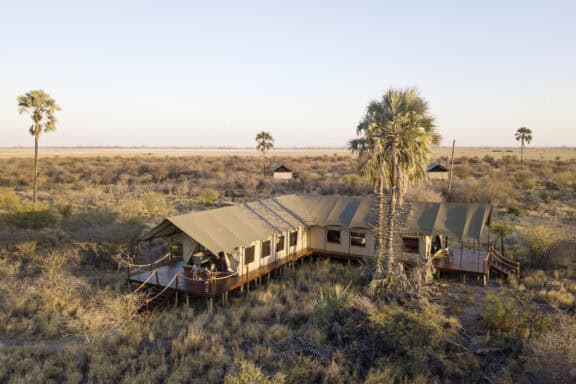


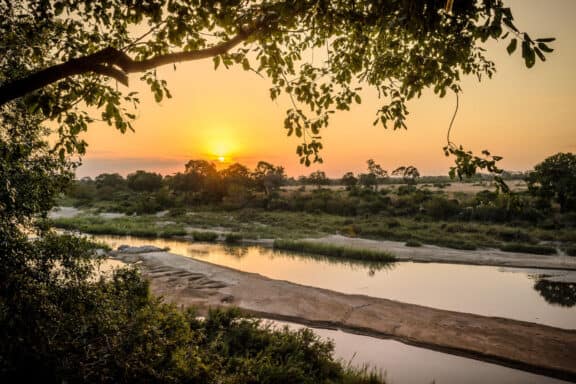
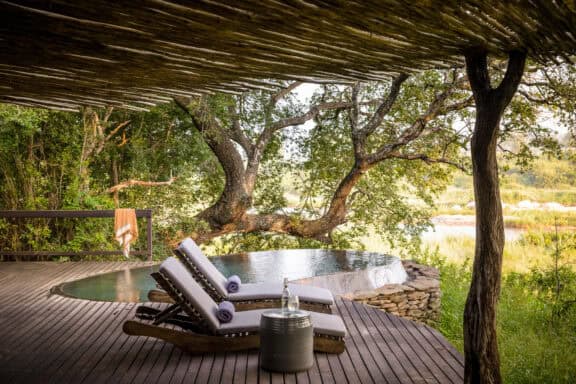


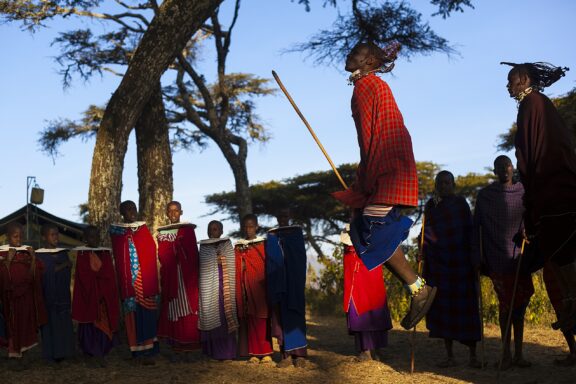


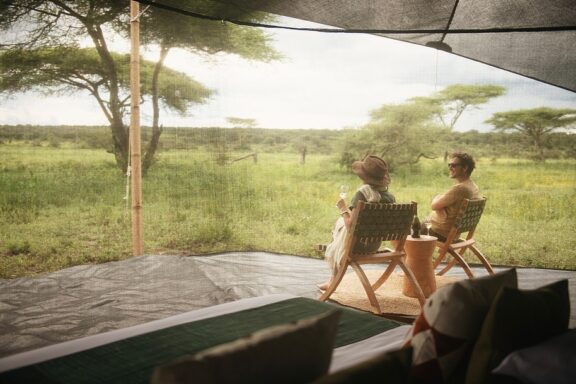


 Blog List
Blog List









Written by Brendan White
• Travel Writer
Verified by Devryn Panaino
• Africa Safari Expert